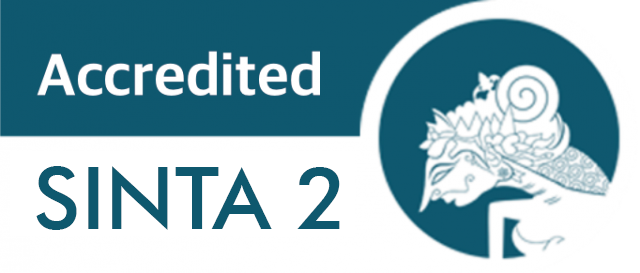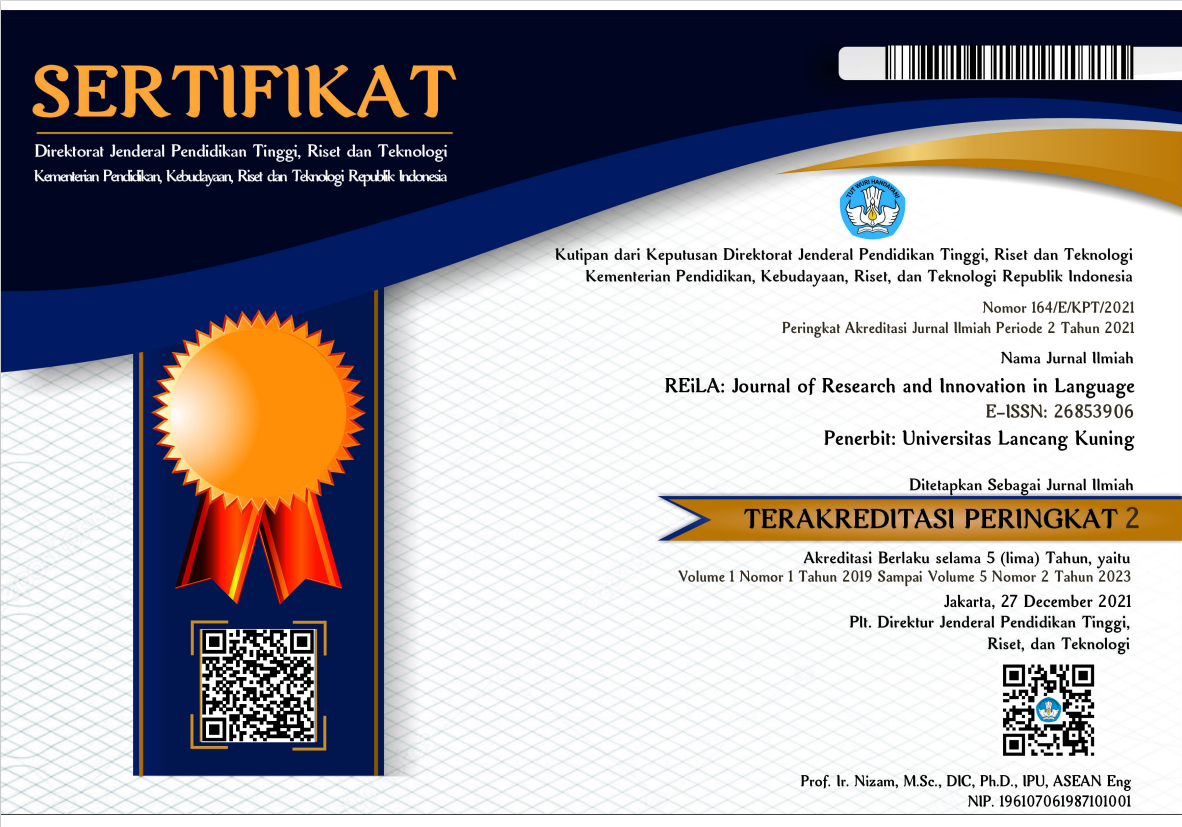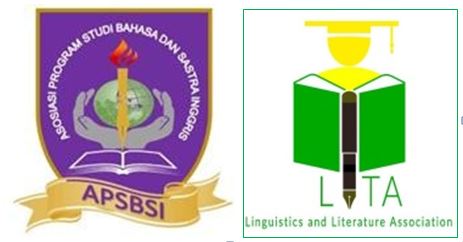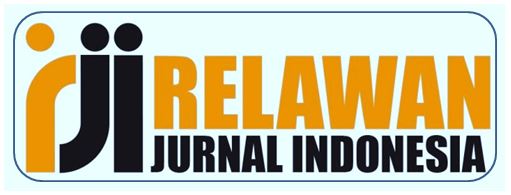The Teachers’ Roles in Reducing the Interference of L1 in Audio-lingual Classrooms: A Qualitative Case Study in Malaysian Primary School
Abstract
This research article explores the teachers’ roles in reducing L1 (First Language) interference in audio-lingual classrooms. The main concern of the audio-lingual method is to focus less on grammar and teaching it inductively. There is also an emphasis on pronunciation in this method. Using tapes, visual language aids, and new materials are presented in an interactive model. The teacher presents a new structure using communicative models, and there is less focus on L1. The study applies a qualitative case study and uses observation and interview data collection techniques in a particular primary school of Malaysia during the English language sessions. The thematic analysis technique is performed to categorize the significant findings into three main themes: teacher as a role model, teacher as an orchestra leader, and teacher as a motivator. The data from classroom observation is triangulated to determine how the data is closed to the interview. The finding shows the problematisation of using L1 in teaching L2 (Second Language) since the interference of L1 negatively impacts learning L2. The study contributes to the perspective that English teachers in audio-lingual classrooms are expected to understand their objective roles. The result also implies the teachers' significance to accept that using L1 in maxim spoils learning L2, especially in an audio-lingual classroom.
Downloads
References
Badrasawi, K. J., Solihu, A., & Tunku Ahmad, T. B. (2020). Second Language Speaking Anxiety Among Malaysian Postgraduate Students at a Faculty of Education. International Journal of Education and Literacy Studies, 8(2), 54. https://doi.org/10.7575/aiac.ijels.v.8n.2p.54.
Brown, H. D. (2001). Teaching by Principle and Interactive Approach to Language Pedagogy. New York: Longman Inc.
Burnkart, G. S. (1998). Spoken Language: What It Is and How to Teach It. White Plains, NY: Longman.
Christine, M. (2007). Being Able to Speak English Is Not the Same as Being an Outsider: Narratives of Complexities of ELT. Chiang Payap: University of Mai.
Clarke, V. & Braun, V. (2013). Teaching Thematic Analysis: Overcoming Challenges and Developing Strategies for Effective Learning. The Psychologist, 26(2), 120-123.
Creswell, J. W., & Poth, C. N. (2017). Qualitative Inquiry and Research Design: Choosing Among Five Approaches. Sage publications.
Ellis, R. (1994). The Study of Second Language Acquisition. Oxford: Oxford University Press.
Elmusharaf K. (2012). Qualitative Sampling Techniques. Training Course in Sexual and Reproductive Health Research. Geneva.
Hashemi, A., & Kew, S. N. (2020). The Effects of Using Blended Learning in Teaching and Learning English: A Review of Literature. International Journal of Eurasia Social Sciences, 18(4),173-179.
Harari, Y., N. (2019). 21 Lessons for the 21st century. London: Vintage. Print.
Hornby, A. S. (2000). Principles of Language Teaching. Oxford: Oxford University Press.
Krashen, S. (1985). Second Language Acquisition. New York: Routledge.
Krashen, S. D., & Terrell, T. D. (1983). The Natural Approach Language Acquisition in the Classroom. New York: Pergamon Press.
Larsen-Freeman, D., & Anderson, M. (2018). Techniques and principles in language teaching. Oxford: Oxford University Press.
McDonough, J., & McDonough, S. (1997). Research Methods for English Language Teachers. London: Arnold.
Miles, M. B., & Huberman, A. M. (1994). Qualitative Data Analysis an Expanded Sourcebook. Thousand Oaks: CA Sage Publications.
Mitchell, F. & Myles. A. (2004). Language Arts & Disciplines. Oxford: Oxford University Press.
Mohammadi, T., Seraj, M. Y., Ibrahim, H., & Abdul Hadi, N. F. (2019). The Purposes of Code-Switching and Teachers’ Perceptions toward Code-Switching in Malaysian Primary Schools. International Journal of Engineering and Advanced Technology, 9(1), 1532- 1536. https://doi: 10.35940/ijeat.A1303.109119.
Nita. A., & Syafei, B. (2012). Classroom Action Research for Test Repository. IAIN Salatiga.
Nunan, D. (1992). Research Methods in Language Learning. Cambridge: Cambridge University Press.
O'Malley, J. M., & Chamot, A. U. (1995). Learning Strategies in Second Language Acquisition. New York: Cambridge University Press.
Pennycook, A. (1994). The Cultural Politics of English as an International Language. Unicamp: John Robert Schmitz.
Phillipson, R. (1994). English for Globalization. New York: ICEA Press.
Rahim, M. N., & Sandaran, S. C. (2020). EFL Teachers' Perceptions of the Barriers and Opportunities for Implementing eLearning at Afghanistan Universities. Universal Journal of Educational Research, 8(11C), 97–104. https://doi.org/10.13189/ujer.2020.082311.
Rahim, M. N. (2021). Post-Pandemic of Covid-19 and the Need for Transforming Education 5.0 in Afghanistan Higher Education. Utamax: Journal of Ultimate Research and Trends in Education, 3(1), 29-39. https://doi.org/10.31849/utamax.v3i1.6166.
Rahim. M.N., & Zare. A. (2021). A Critical Review of the Impacts of Digital Citizenship on Teachers and Students' Educational Development. International Journal of Multidisciplinary: Applied Business and Education Research, 2(7), 557-564. https://doi:10.11594/ ijmaber.02.07.01.
Rahim, M. N., Mohammadi, T., & Hashemi, A. (2021). A Critical Evaluation of the Twelfth Grade English Language Textbook for Afghanistan High Schools. Elsya: Journal of English Language Studies, 3(2), 67-77. https://doi.org/10.31849/elsya.v3i2.6295.
Rahim, M. N., & Ali, M. B. (2021). The Effect of Using Social Media on Academic Performance of Faculty Members during Covid-19 Pandemic. Utamax: Journal of Ultimate Research and Trends in Education, 3(2), 106-114. https://doi.org/10.31849/utamax.v3i2.5934.
Richards, J. C. & Rodgers, T.S. (2001). Approaches and Methods in Language Teaching. London: Cambridge University Press.
Saricoban, A. (2016). Foreign Language Teaching Practicum Beliefs of Student Teachers. Dil ve Dilbilimi Çalışmaları Dergisi, 12(1), 166-176.
Shafie, L. A., & Nayan, S. (2010). The Roles of University English Teachers in Malaysia. Journal of Language Teaching and Research, 262-265.
Tavakoli, P. (2017). Is Fluency Being Neglected in the Classroom? Tehran: SAMT.










